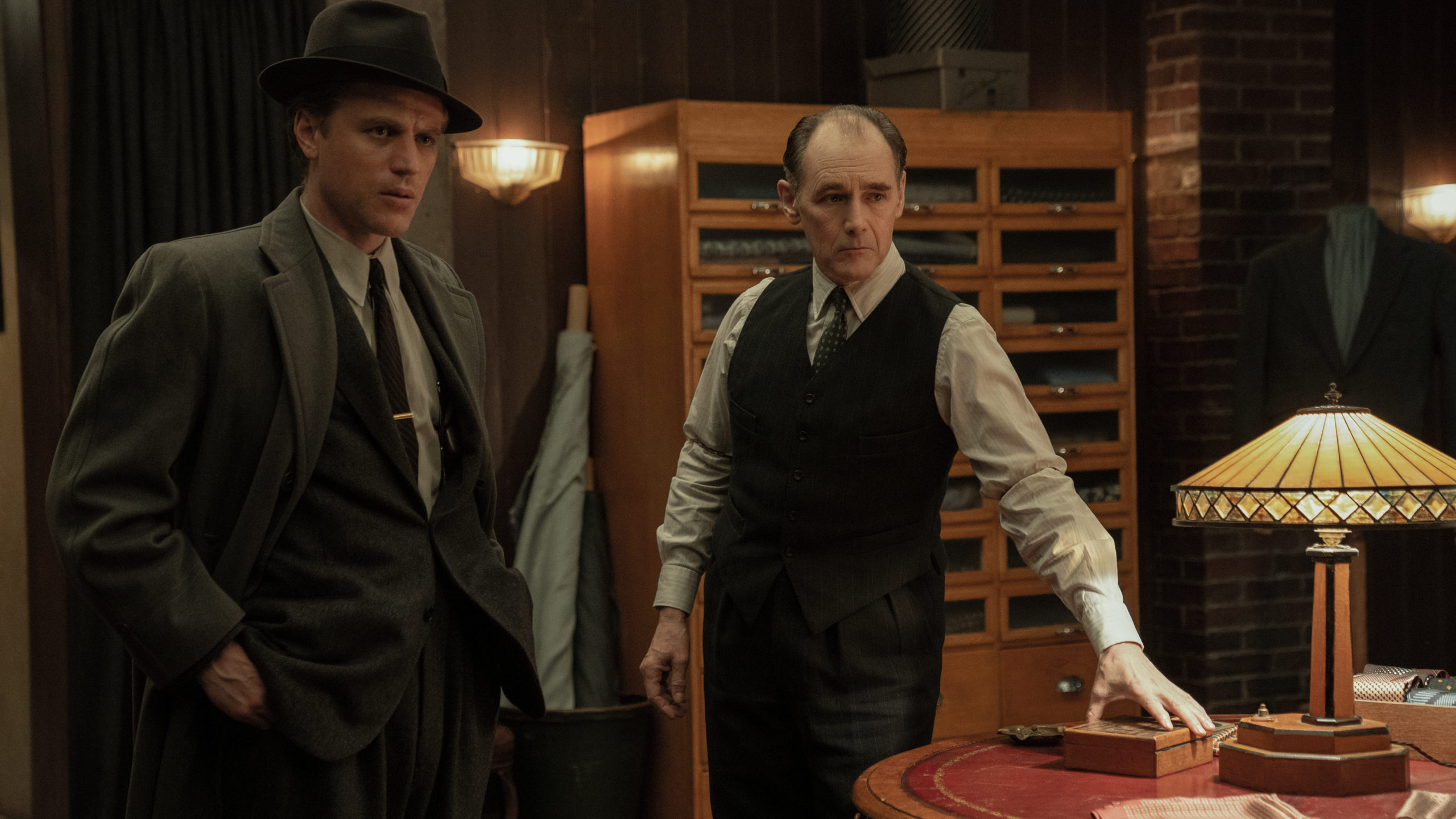
Graham Moore made a splash in Hollywood seemingly out of nowhere, winning the Best Adapted Screenplay Oscar for his first feature film writing credit, The Imitation Game. The eight-year-long absence perhaps gave the wrong idea that the “Oscar curse” can also apply to writers. But any thought of this will quickly fizzle out once The Outfit hits theaters. This time around, he’s writing and directing a wildly creative thriller. While his last film is based on real historical figures, the characters and story in this period piece are fictional but inspired by the seedy underworld of Chicago and Al Capone’s crime syndicate, The Chicago Outfit. Once synonymous with organized crime, the Windy City is the perfect setting for a thriller that centers around a vicious turf war between gangster families, and even more vicious betrayals.
The year is 1956. A man explains the intricacies and craftsmanship it takes to make a suit, with all its layers, fabrics, and the skill that goes into perfecting its smallest details. London-born Leonard (Mark Rylance) is a perfectionist with an eye for detail that makes him the best cutter in Chicago. The Outfit’s introduction has a calming atmosphere, as Alexandre Desplat’s light brush of piano keys moves with the elegant handling of Leonard’s shears. You wonder how suspenseful this thriller could possibly be. The writing tricks the viewer in a way, with this presentation of an unassuming, soft-spoken man running an honest business, who enjoys casual conversation with his assistant, Mable (Zoey Deutch), even sharing some moments that resemble those of a father and a daughter. Then the audience clues in that the customers coming and going are gangsters using his shop as a drop spot. Leonard, for the most part, minds his business, seemingly too consumed by the love of his craft to care or even notice the dealings happening right under his nose. But when Richie (Dylan O’Brien), the neighborhood gang leader’s son, stumbles into his shop with a bullet wound, he’s not just staining Leonard’s work with crimson, but bringing treachery, deceit, and a war between crime families along with him.
It may be one long night for the film’s characters, but it’s far from that for the audience. This has much to do with the actors tasked with anchoring this story. This is made more challenging due to the film taking place in a single location. The film’s cinematography and production design may seem perhaps too muted, but it matches Leonard’s personality and makes his shop feel very lived in. It’s also the right stage for this gangster hit because, according to Vanity Fair, the first FBI bug was planted in Celano’s Custom Tailors, the downtown headquarters of the Chicago Mob, in 1957. Moore and co-writer Johnathan McClain clearly wanted to make this as authentic an experience as possible, and while we may never see any bullets flying, the environment is built up to be an explosive one all the same.

Courtesy of Nick Wall / Focus Features
The tension between Richie and fellow mobster, Francis (Johnny Flynn), their distrust for each other, and their apparent power imbalance sets the scene and those in it on edge. Despite being the boss’s son, Richie feels behind in the ranks from Francis, and both their ambitious natures clash. The casting is genius in a way because their appearance perfectly mirrors all this. Flynn fits into this crime world with ease, giving off the same qualities as a noir film character on the lam. O’Brien is the opposite. While his performance is just as good as Flynn’s, he doesn’t feel like a period actor with his more modern features. But this out of placeness fits because it reflects how Richie doesn’t fit in his position as next in line to the family’s throne. These observations are made through Leonard’s eyes, and while he and Mable move the story forward in surprising ways, Deutch is sidelined with rare moments to truly shine. This is unfortunate because, if you’ve seen Buffaloed, you know what she can do. Rylance brings wit and humor to the piece, even under the most stressful circumstances. It’s interesting to observe him and see how Leonard handles himself in the situation he’s thrown into. His eye for detail and mild-manner prove to be an asset as he can observe silently and attempt to beat them at their own game. Just like his suits, Leonard also proves to be a layered character, the writers adding a new aspect to him, like a tailor sewing on a new button, as the narrative moves forward.
The Outfit attempts to be a master at the thriller, just like Leonard is a master at his craft. It moves along to the same curvature as the cutter’s shears, but occasionally, the script isn’t so skilled. The film’s many twists are all planned out in a way that is unpredictable and hidden in plain sight, but the presentation of them, one right after the other, loses the viewer a bit. But these threads are sewn together to create a story that’s many things. It’s a reflection on the immigrant experience of making something of yourself only for it to be snatched away by the elite and their generations of wealth. The titular outfit, of course, refers to the infamous syndicate, but Leonard emphasizes what it reflects. Style reveals a lot about someone’s personality. The suit makes the man, as they say, but it doesn’t necessarily make a gentleman. A suit is a tool, used to provide the semblance of power, but it only matters how you use it.



